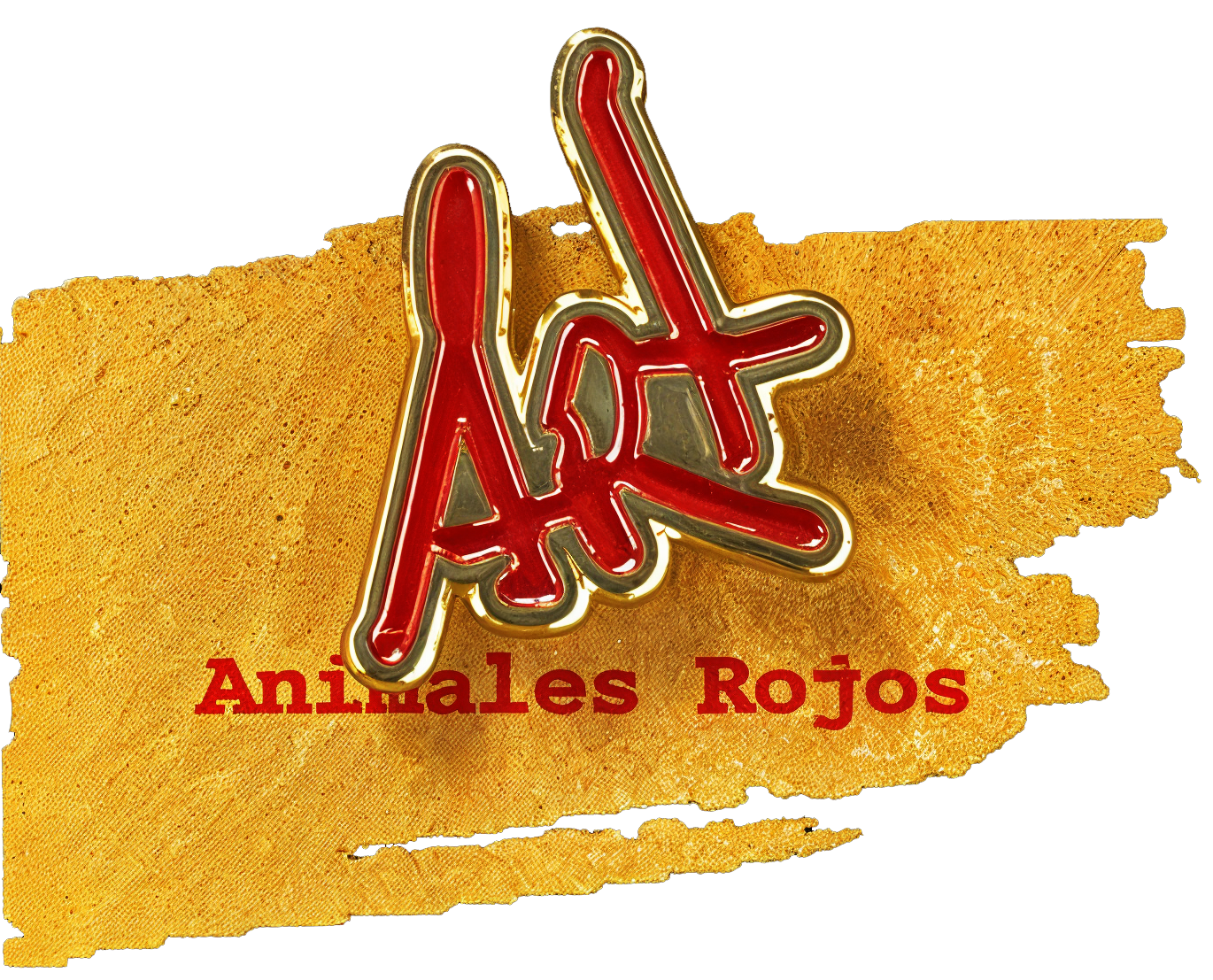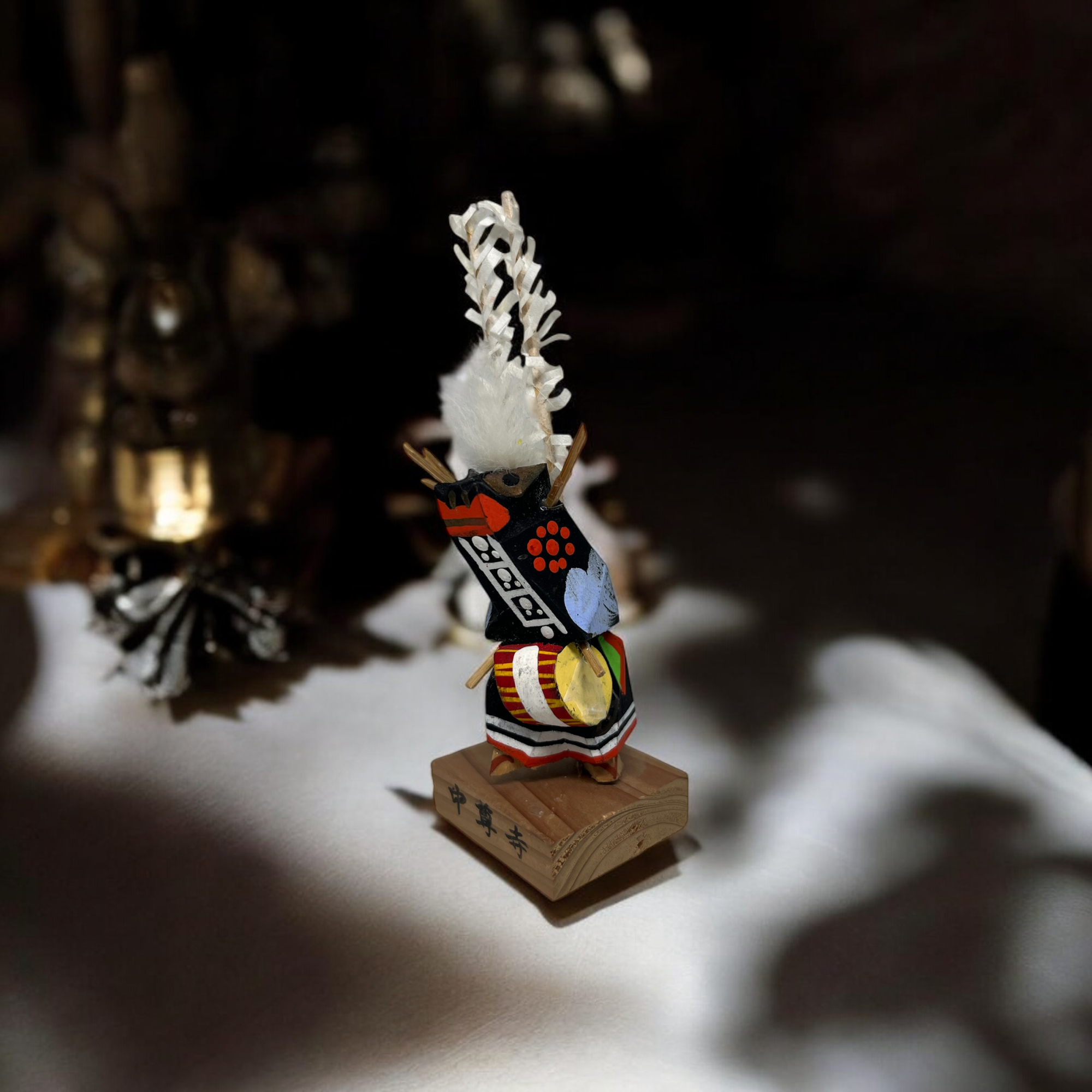
This is a handcrafted Japanese miniature figure, likely representing a ceremonial warrior or traditional dancer — possibly a Yamabushi (mountain ascetic monk) or a performer from festivals such as Shishi-mai (Lion Dance) or Yamaboko Junko from Kyoto’s Gion Matsuri.
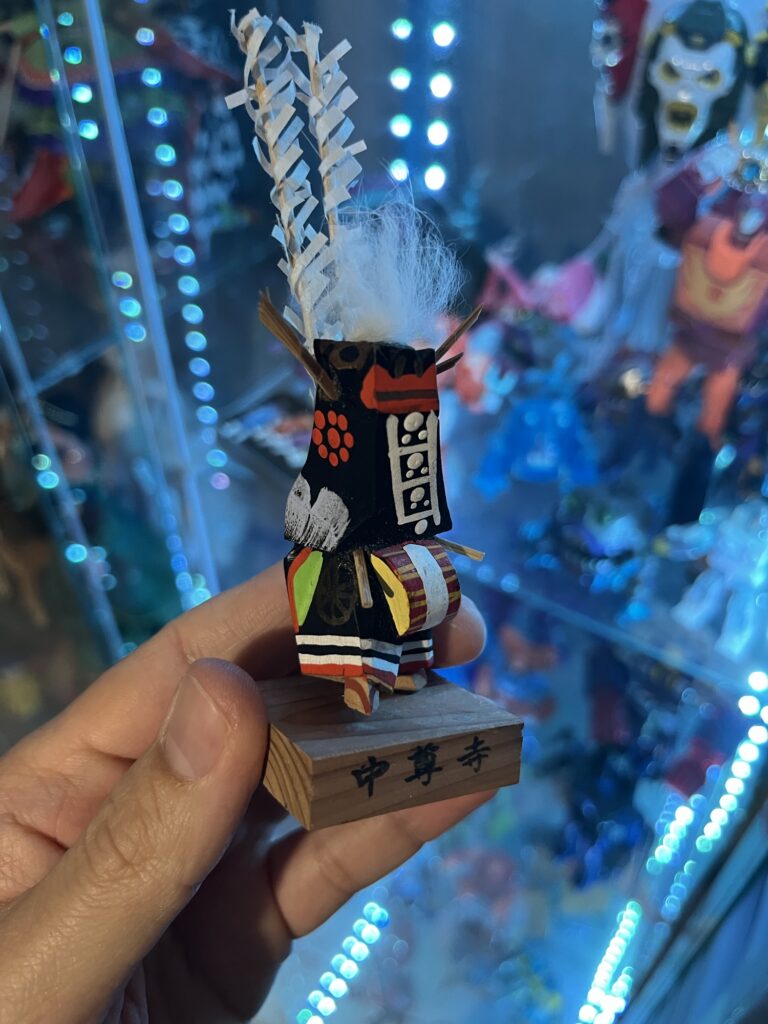
Esta es una figura japonesa en miniatura hecha a mano, que probablemente representa a un guerrero ceremonial o un danzante tradicional — posiblemente un Yamabushi (monje asceta de montaña) o un intérprete de festivales como el Shishi-mai (Danza del León) o el Yamaboko Junko del Gion Matsuri de Kioto.
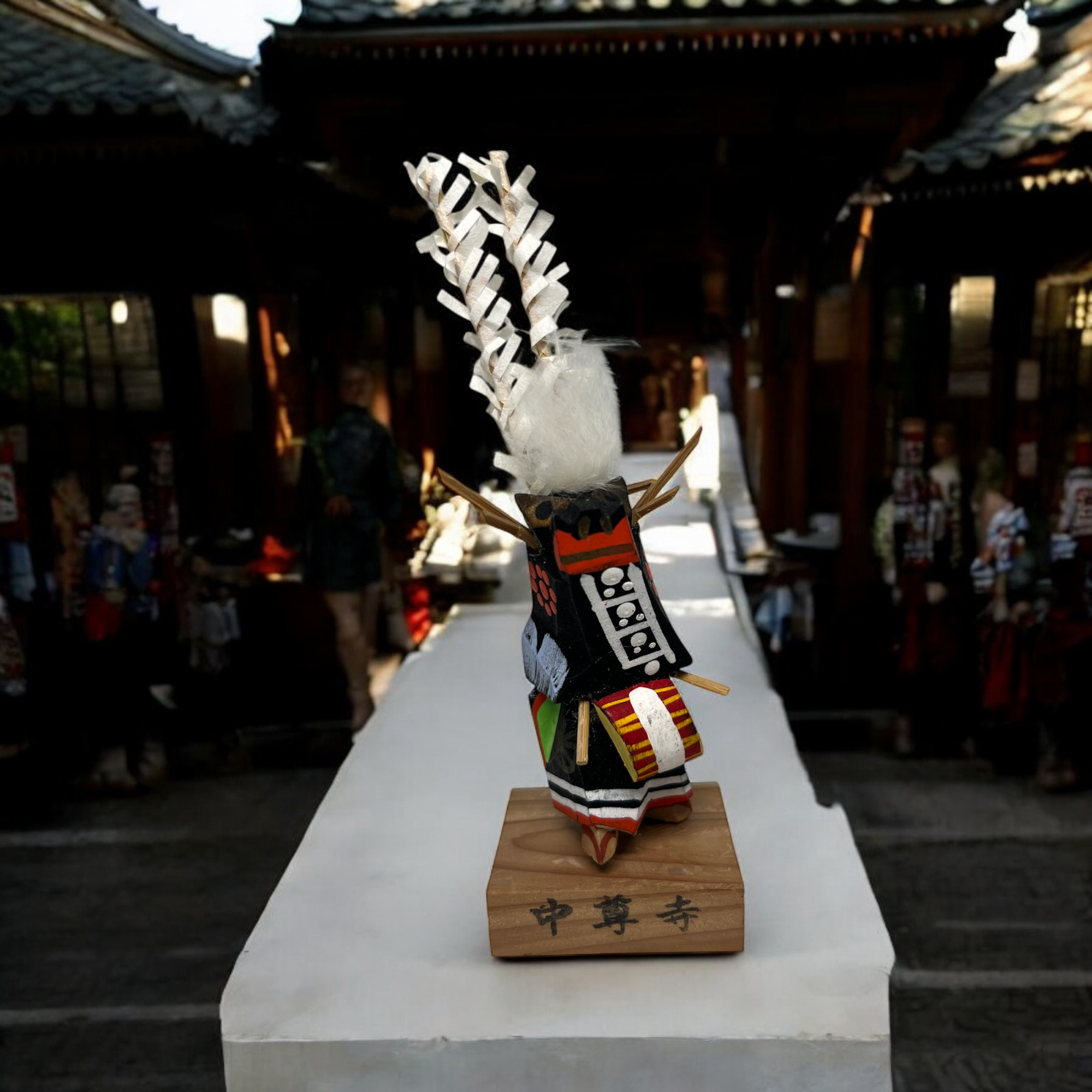
The vibrant attire, drum on the waist, and zigzag paper strips (shide) on the headdress are all elements tied to Shinto rituals and Japanese folk celebrations.
El atuendo colorido, el tambor en la cintura y las tiras de papel en zigzag (shide) sobre la cabeza son elementos vinculados a rituales sintoístas y celebraciones folclóricas japonesas.
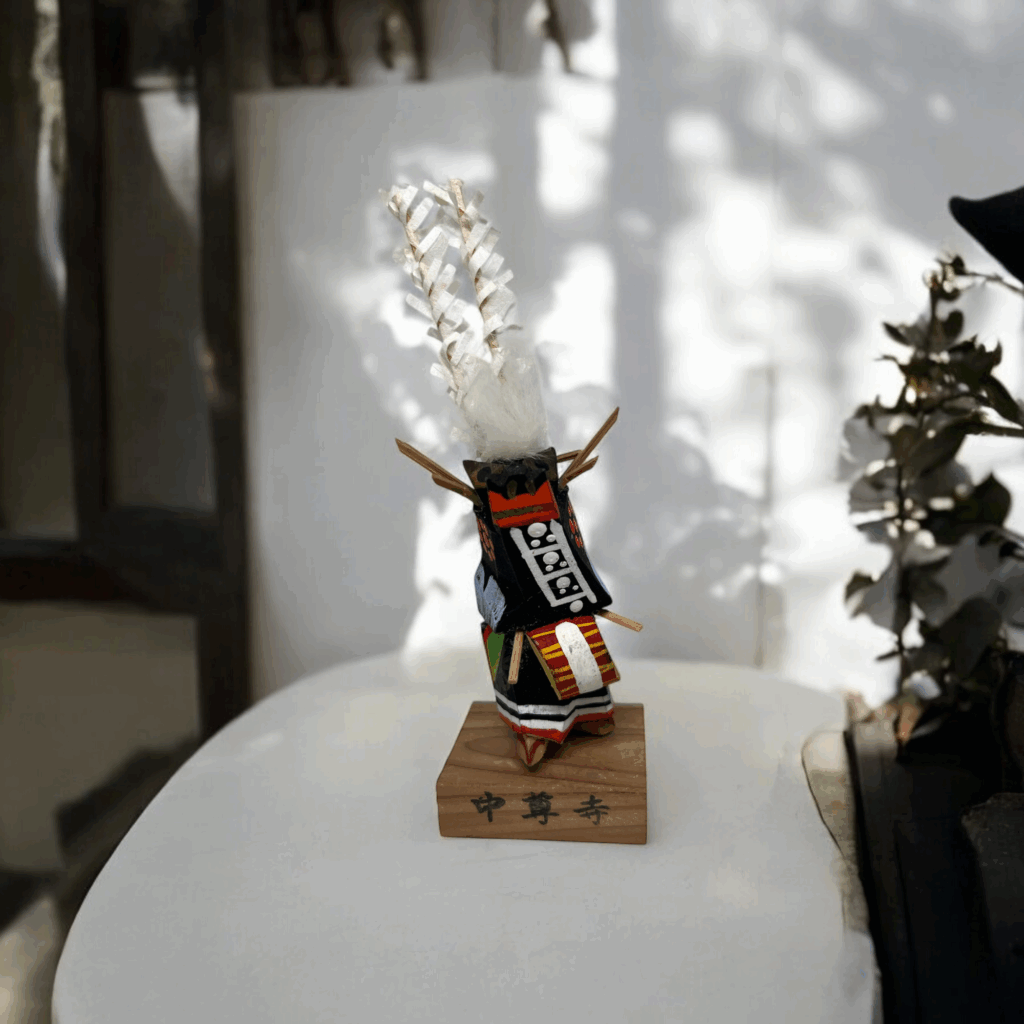
The wooden base is inscribed with the kanji 中尊寺 (Chūson-ji), referring to the renowned Buddhist temple located in Hiraizumi, Iwate Prefecture.
La base de madera está inscrita con los caracteres japoneses 中尊寺 (Chūson-ji), que hacen referencia al famoso templo budista ubicado en Hiraizumi, prefectura de Iwate.
Chūson-ji is a UNESCO World Heritage Site, known for its rich historical significance and the iconic Golden Hall (Konjikidō).
Chūson-ji es Patrimonio de la Humanidad de la UNESCO, conocido por su importancia histórica y su icónico Salón Dorado (Konjikidō).
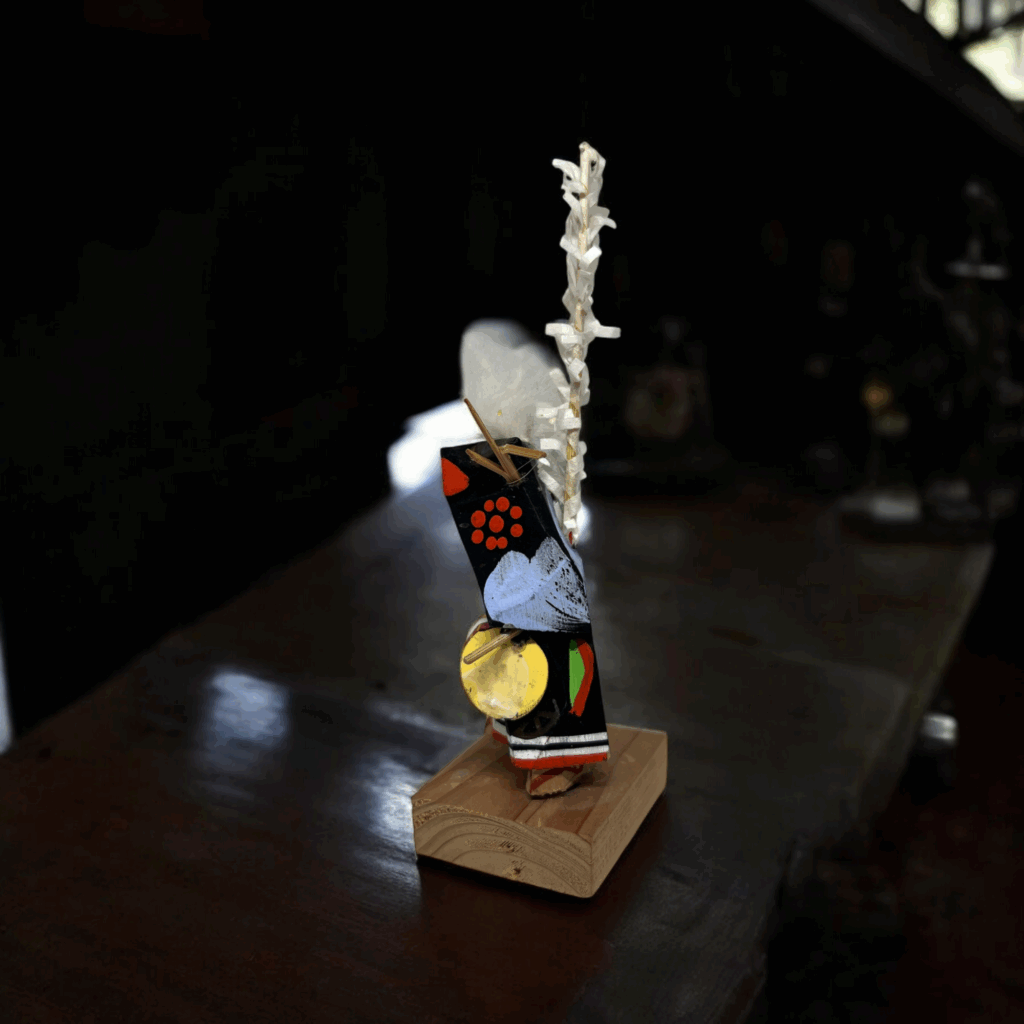
This figure is most likely a traditional souvenir from the temple, representing a folkloric or spiritual character associated with regional rituals.
Esta figura es muy probablemente un recuerdo tradicional del templo, que representa un personaje folclórico o espiritual asociado con rituales regionales.
Its hand-painted wooden design showcases the intricate craftsmanship of Japanese folk art.
Su diseño tallado en madera y pintado a mano muestra la delicada artesanía del arte popular japonés.
